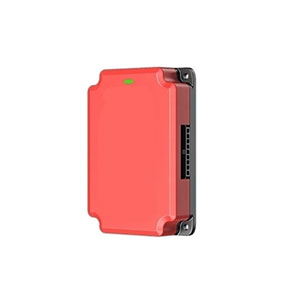What is a Battery Balancer?
A battery balancer, also known as a battery equalizer, is an electronic protective device designed to prevent the decrease in the lifespan of a battery due to imbalances in voltage among individual cells within the battery. When there is an imbalance in voltage between the cells, different cells charge and discharge at different rates. While one cell completes its charging cycle, other cells may be in a state of overcharging or undercharging, both of which can damage the battery and result in reduced capacity and shortened lifespan. The battery balancer ensures real-time balance of energy among individual cells, thereby extending the lifespan of the battery by 5-30%. In this article, ATO industrial automation delves into the components, working principle, advantages, and diverse applications of battery balancers, shedding light on their significance in various industries.
Components of Battery Balancers
Battery balancers consist of essential components designed to maintain equilibrium among individual cells within a battery pack. The primary components include:
- Cell Monitoring Circuitry: This component constantly monitors the voltage of each battery cell in real-time, ensuring a precise assessment of their states.
- Balancing Circuitry: Employing resistors or other balancing devices, this component facilitates the equalization of cell voltages by redistributing energy among cells.
- Microcontroller Unit (MCU): Acting as the brain of the balancer, the MCU interprets data from the monitoring circuitry and orchestrates the balancing process.
Working Principle of Battery Balancers
The fundamental principle governing battery balancers is to rectify voltage imbalances among individual cells within a battery pack. As batteries undergo charge and discharge cycles, imbalances can emerge due to differences in cell capacities, manufacturing variations, or external factors.
The battery balancer continuously monitors the voltage of each cell. When imbalances are detected, the balancer activates the balancing circuitry. This circuit redistributes energy from cells with higher voltage to those with lower voltage, ensuring a harmonized state across the entire battery pack.
Advantages of Battery Balancers
- Prolonged Battery Life: By preventing overcharging or over-discharging of specific cells, battery balancers contribute to extending the overall lifespan of battery packs.
- Enhanced Safety: Maintaining uniform cell voltages reduces the risk of thermal runaway, a critical safety concern in battery systems.
- Improved Performance: Balancing ensures that each cell contributes optimally to the overall energy output, enhancing the performance of the entire battery pack.
Applications of Battery Balancers
Battery balancers find applications in a wide array of industries, including:
- Electric Vehicles (EVs): Battery balancers are crucial in EVs to optimize the performance and lifespan of lithium-ion battery packs.
- Renewable Energy Systems: In solar and wind energy storage systems, battery balancers ensure efficient energy utilization and storage.
- Telecommunications: Battery balancers play a vital role in maintaining reliable backup power systems for communication networks.
- Uninterruptible Power Supplies (UPS): UPS systems benefit from battery balancers to safeguard against voltage imbalances during power outages.
In conclusion, battery balancers emerge as indispensable components in the realm of energy storage, ensuring the longevity, safety, and optimal performance of battery systems across various applications. As technology advances, the role of battery balancers will likely become even more prominent in shaping the future of energy storage solutions.

